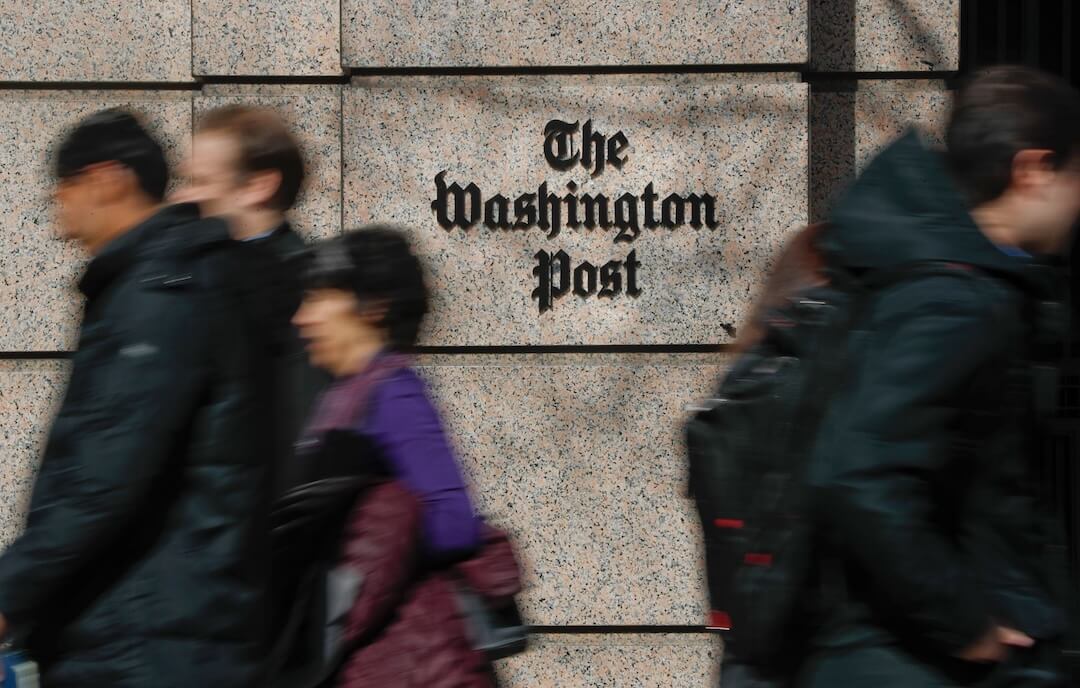Last month’s redesign of The Wall Street Journal represented the first major overhaul of the paper since its inception in 1889. The paper got started back then as a four-page broadsheet with solid text arranged in four columns. Images were rare, although charts appeared now and then. In subsequent years, the Journal grew into a large multi-sectioned paper, but its design features changed little. Except for reformatting to six columns and adding new sections, the paper looked in 2002 much like it did in 1889. Obviously, the conservative design did not interfere with its success. With 1.82 million subscribers, it is the second largest daily in the United States. It is the newspaper of record for the financial community. So the redesign of 2002 was a radical move.
WHY CHANGE?
In 2000, the Journal began to make mechanical changes that could affect how the paper was put together. The paper began upgrading its presses and discovered that additional press capacity would not only speed things up but allow for more color, additional sections, and slightly reduced page sizes.
The mechanical changes provided a perfect opportunity for the Journal to make design changes.
STARTING THE CHANGE
The Journal hired Mario Garcia as the design consultant to work with the Journal’s Joanne Lipman and Joe Dizney, among others. Garcia described the project as the “ultimate W.E.D. project” (W.E.D. refers to Writing, Editing, and Design, a concept and acronym developed by Garcia in the late eighties to refer to a uniform understanding and integration of the journalistic disciplines). Eventually, the redesign process involved almost everybody in the Journal newsroom. Writers, editors, designers, and artists contributed to the discussions at the beginning that gave direction of the redesign. Later, as page prototypes were created, everyone had a chance to view them and make comments.
THE CONVERSATIONS BEGIN
Lipman, a Journal deputy managing editor, told a recent ASNE discussion of the project that the paper wanted a redesign driven entirely by content. She launched the process in the Fall of 2000 by asking groups of people in the paper the following questions:
How is the paper working?
What’s working?
What’s not working?
What do we want to change, if anything at all?
And, most important, what would you like to achieve that you cannot do now in the current design?
The discussions that followed provided these goals:
• Make things easier to read and find.
• Improve navigation.
• Help the reader find things faster.
• Give the reader news they can use.
• Present news that is relevant.
• Give people advice about how to live, what choices to make about financial news.
• Create ways to attract new readers who are not regular readers, some of whom may be intimidated by the content and design.
• Open up the paper to more readers.
• Create a place for more breaking news on the front page.
At the same time, the group made it clear that — this was a fundamental issue — that it was essentialy to make sure that the dedicated, older readers were still satisfied.
STARTING THE PROCESS BY EXAMINING THE PAST
Garcia and Joe Dizney, the paper’s design director, the launched a ‘visual archeology’ of the paper. This involved going back into the files and studying typefaces that had been used with a view to seeing what could be kept or restored, what could be added without disturbing the identity of the paper, and reflecting on what could be improved.
They excavated an assortment of typefaces, including Caslon, Scotch Roman and several different sans serif faces. They found that over the years as various typefaces were added to the typographic system, the paper had become jumbled and inconsistent. To solve that problem, they streamlined the typographic structure by deciding on three main faces.
Scotch was the original typeface for headlines, used from the beginning. It was an important face and people identified it as The Wall Street Journal.
For that reason, it was retained for headlines, but redrawn to make it look less Victorian and more contemporary. It was redrawn and enhanced by The Font Bureau. It is now called WSJ Scotch Compressed.
The redesign of the WSJ typeface Scotch.Multiple line headlines of Scotch Compressed were kept and two-line headlines were added on the front page, allowing for more information in the headlines.
Franklin Gothic was preserved and redrawn to refresh its look, and used for charts, graphs, inside boxes and other visual elements like interior labels, providing good contrast to the elegant Scotch. The bold weight that Franklin Gothic provides is the kind of weight that draws the eye and provides a strong navigational device for the reader.
Because stock listings were so important to the paper, research was done to find the most readable face. Retina was chosen. This is the first time Retina has been used in a newspaper. It was redrawn by Tobias Frere Jones of the Hoefler Type Foundry.
The nameplate was an important recognizable element that had to stay. But it looked ‘funereal’, according to Dizney. So it was cleaned it up and made to look more contemporary by California-based type designer Jim Parkinson. The change was subtle.
DIAMONDS AND STARS
The diamonds and stars in “What’s News” stayed. Feature stories would be indicated with diamonds as well.
Throughout the paper many devices were enhanced or created to help the reader find things in easier ways.
For example, before the redesign, ‘Inside Today’s Journal’ on the front page was crowded and difficult to see or read. In the redesign, it became more prominent with an organized and stronger design, a grid that allowed for some air, and more images and color. Now, “Inside Today’s Journal” acts as a navigational device to get the reader through the paper. In addition, this change to “Inside today’s Journal” allowed “What’s News” to become longer.
Because “What’s News” is the first item that is read on the front page it was enhanced with some white space to set it off, the color blue on the label (What’s News), and a light tan color to help it stand out.
THE FRONT PAGE
The format of the front page was changed: The left hand three columns were formatted with a main story at the far left and the “What’s News” column over the next two. The third and fourth columns were reserved for breaking news and the sixth column for in-depth or surprise stories. Breaking news stories are now introduced with two-line headlines, a substantial departure from the old front page.
So the new front page was reorganized to allow for the best stories to rise to the top.
To facilitate hierarchy through the pages, each story was composed of specific elements, depending on placement and importance. This helps move the reader from story to story and page to page.
The following story structures were established to identify the kinds of stories that appear in the paper:
1.) Lead story
2.) “A” heads” (stories that appear on news pages with hoods and littlediamonds)
3.) Features
4.) Boxed stories
5.) Briefs
By categorizing the story structures, the redesign team was able to enhance the hierarchy on inside pages by identifying stories and placing them appropriately.
COLOR PALETTE
Garcia on color: “A basic foundation of this design was the creation of a color palette, to make sure that when color appeared on page one, for example, it would be designed in an elegant manner. We needed to end up with very few colors that would be used consistently and repeatedly.”
Thus the choice of mint green, sky blue, and soft champagne were chosen along with vanilla, some burgundy and logo blue, Garcia told the ASNE session. All of the color choices were chosen so that they would not overpower the content. Instead, they are intended to enhance the content.
The following changes were made in various sections:
MARKETPLACE
A better, clear INSIDE was added. A deep red color was added to the type as a powerful navigational device.
MONEY & INVESTING
Marketplace was meant to demystify the market. Here’s what changed:
• A better, more organized and punchier ‘What’s Inside.’
• Ccharts formerly at the top were moved to the bottom, clearing the top for good stories.
• “Ahead of the Tape” was created – it demystifies the market.
PERSONAL JOURNAL
To appeal to the readers who may be intimidated by the content and look of the paper, a new section called “Personal Journal” was created. It presents Health, Travel, Electronics. EVERY piece in Personal Journal has a sidebar or fact box – something that you can take with you. Every headline is directed right at the reader, e.g., “What Enron Means for Your Tax Return.”
IN THE END
Garcia sums up the Journal redesign like this:
“This design was an intellectual exercise, involving the discipline and discoveries of research, the analysis of hundreds of journalists, past and present, plus the input of editors at various levels with whom we worked for 21 months. We gave the WSJ a new look that, although new and modern, did not take away from the look and feel of the traditional newspaper. An avid reader would still recognize his newspaper in the newly redesigned WSJ. That was our main goal, and it was achieved.”
[Mario Garcia and Pegie Stark Adam are affilliates of the Poynter faculty in visual journalism. Mario Garcia’s design firm, Garcia.Media, was the consultant to The Wall Street Journal on the project described in these articles. Pegie Stark Adam joined Garcia.Media after the Journal project was commissioned and was not a principal in the project.]





